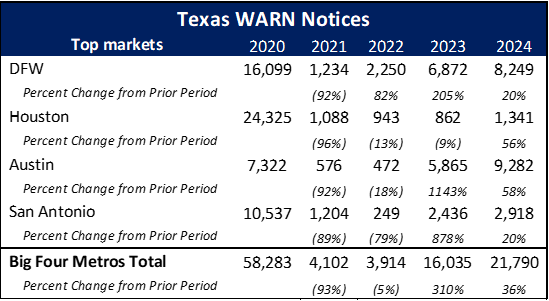Fed + Treasury more money and lower rates — Week of May 6, 2024

| index | wtd | ytd | 1-year | 3-year | 5-year | index level |
|---|---|---|---|---|---|---|
| S&P 500 Index | 0.56 | 7.99 | 28.21 | 8.85 | 13.57 | 5,127.79 |
| Dow Jones Industrial Average | 1.14 | 3.21 | 19.20 | 6.40 | 10.17 | 38,675.68 |
| Russell 2000 Small Cap | 1.71 | 0.85 | 20.24 | -1.94 | 6.14 | 2,035.72 |
| NASDAQ Composite | 1.44 | 7.86 | 36.14 | 6.69 | 15.63 | 16,156.33 |
| MSCI Europe, Australasia & Far East | 1.65 | 4.72 | 11.95 | 4.11 | 7.08 | 2,309.49 |
| MSCI Emerging Markets | 2.01 | 4.50 | 12.01 | -4.58 | 2.47 | 1,061.45 |
| Barclays U.S. Aggregate Bond Index | 1.17 | -2.06 | -0.48 | -3.18 | 0.11 | 2,117.52 |
| Merrill Lynch Intermediate Municipal | 0.51 | -0.98 | 1.80 | -0.66 | 1.37 | 311.81 |
As of market close May 3, 2024. Returns in percent.
Investment Insights
— Steve Orr
More money
Stocks jumped back into the green last week, and the major indices are batting .500 for the past six weeks. The S&P 500, Dow Industrials and NASDAQ all started this sideways consolidation back in early March. A push to new highs around the 28th ran the Bull’s gas tank to empty. From there, fears of higher interest rates took over, along with earnings worries.
We are well past the halfway point in the earnings season with 80% of the S&P 500 having turned in their first quarter homework. Earnings have grown an OK 5% year-over-year, and FactSet calculates the forward P/E for the big index at 19.9x. Consumer discretionary spending is front and center this week with reports from Disney, Electronic Arts and Warner Discovery.
More than earnings, stock markets love liquidity, especially cheap money. Two events last week gave traders hope for those elusive Fed rate cuts. First, Treasury Secretary Yellen raised the amount of Treasury Bills that will be issued to fund Congressional spending over the next two quarters. Second, a slightly weaker jobs report boosted hopes for a weaker economy. Let’s dig into the market’s logic of both.
Fed + Treasury
A bit of Fed background helps to understand the Treasury Bill issue. Big Money Market Funds are able to place deposits directly at the Fed and get paid interest. This program is called the Reverse Repo Facility and currently pays a percentage of the target Fed Funds rate. That rate is running north of 5.25% today. T-Bills maturing in the next four months are running north of 5.3% in yield. Yellen proposed increasing Bill issuance by at least $350 billion (using round numbers here).
The Fed is afraid that Money Market Funds will pull money out of the RRP and buy higher yielding Bills instead. Since they have done that repeatedly in the past (look: rational investors!) the Fed’s fears are well-founded. Buying Treasuries drains money from the banking system, and the Fed does not want a repeat of the problems in 2019 when liquidity markets nearly froze.
Yellen essentially forced the Fed to slow its Quantitative Easing program. Each month the Fed has tens of billions of dollars in Treasury Bills and Notes maturing out of its portfolio. The QT program meant that $60 billion per month of Treasury securities were not being replaced. Those funds were drained from the banking system as excess reserves. Last Wednesday, the Fed announced that the QT cap would be lowered to $25 billion.
Net effect
In other words, starting in June the Fed will buy $35 billion per month more into Treasury securities than it had been for the past year. That buying will aid bond prices, which lowers their interest rates. Much of this additional buying will be done at Treasury auctions, which lowers the supply of Treasury debt in the market.
By increasing its monthly bond purchases, the Fed is trying to lower longer-term interest rates. We understand the rationale given by the Fed, that lowering QT lowers stress in the funding markets. The three-legged stool of Treasury General Account, Fed balance sheet and Reverse Repo Program are opaque to most of us. Regardless of the rationale, the effect is to lower the costs of the administration’s deficit spending.
Jobs, jobs, jo…
Is employment shrinking? Hardly, but job growth is certainly not as robust as a year ago. April’s estimate by the Bureau of Labor Statistics suggested employers created a net 175,000 new jobs last month. This was well below estimates of 200,000-plus. As in prior months, a good chunk of the jobs were in healthcare and government. Chairman Powell has stated that the Fed is watching employment closely as a factor in future rate decisions. Expect plenty of attention in the financial press on future payroll releases.
Monthly payroll and unemployment rate surveys are released usually on the first Friday of the month. Jobless claims reported by the states are released each Thursday morning. Jobless claims have remained usually low and repetitive recently. They have stayed in a very tight range of about 205,000 to 212,000 per week. Usually, this series is much more volatile. Our indicator lights flash at 300,000; recession level is 500,000. Keep that number in mind.
Before workers from larger companies can file for unemployment, their employers have to give notice to their respective state employment agency(cies). This is under a federal statute called the Worker Adjustment and Retraining Notification Act of 1988 (WARN). This rule sets a minimum 60-day notice period. WARN notices go up first, then Jobless claims and finally the Unemployment rate. For those keeping score, note how local WARN numbers year-to-date are larger than all of last year and the proceeding three years (thanks to Ethan on our team for gathering this info).

Source: Texas Workforce Commission
Ceiling
We have likely reached the highest level of employment, rates and inflation for this business cycle. Dating from the shutdowns, inflation peaked at 9%, employment this April at 158.2 million and the 10-year Treasury touching 5% last October.
Wrap-Up
We are biased toward rates rising in the coming years and inflation remaining sticky. Over the coming quarters, we cannot ignore declining consumer spending and business surveys showing firms large and small reining in their spending and hiring plans. Slowing toward first gear is ahead but not a recession.
Stocks will continue to consolidate over the next few weeks, waiting on straggler earnings reports and Fed speakers to give hints as to when cuts might occur. We expect Wall Street to overshoot in its excitement to cut rates, and that their hopes will again be dashed.
Steve Orr is the Managing Director and Chief Investment Officer for Texas Capital Bank Private Wealth Advisors. Steve has earned the right to use the Chartered Financial Analyst and Chartered Market Technician designations. He holds a Bachelor of Arts in Economics from The University of Texas at Austin, a Master of Business Administration in Finance from Texas State University, and a Juris Doctor in Securities from St. Mary’s University School of Law. Follow him on Twitter here.
The contents of this article are subject to the terms and conditions available here.
Texas Capital Private Bank™ refers to the wealth management services offered by the bank and non-bank entities comprising the Texas Capital brand, including Texas Capital Bank Private Wealth Advisors (PWA). Nothing herein is intended to constitute an offer to sell or buy, or a solicitation of an offer to sell or buy securities.
Investing is subject to a high degree of investment risk, including the possible loss of the entire amount of an investment. You should carefully read and review all information provided by PWA, including PWA’s Form ADV, Part 2A brochure and all supplements thereto, before making an investment.
Neither PWA, the Bank nor any of their respective employees provides tax or legal advice. Nothing contained on this website (including any attachments) is intended as tax or legal advice for any recipient, nor should it be relied on as such. Taxpayers should seek advice based on the taxpayer’s particular circumstances from an independent tax advisor or legal counsel. The wealth strategy team at PWA can work with your attorney to facilitate the desired structure of your estate plan. The information contained on this website is not a complete summary or statement of all available data necessary for making an investment decision, and does not constitute a recommendation. The information has been obtained from sources considered to be reliable, but we do not guarantee that the foregoing material is accurate or complete. Any opinions are those of the authors and not necessarily those of PWA or the Bank.
©2025 Texas Capital Bank Wealth Management Services, Inc., a wholly owned subsidiary of Texas Capital Bank. All rights reserved.
Texas Capital Bank Private Wealth Advisors and the Texas Capital Bank Private Wealth Advisors logo are trademarks of Texas Capital Bancshares, Inc., and Texas Capital Bank.
www.texascapitalbank.com Member FDIC NASDAQ®: TCBI